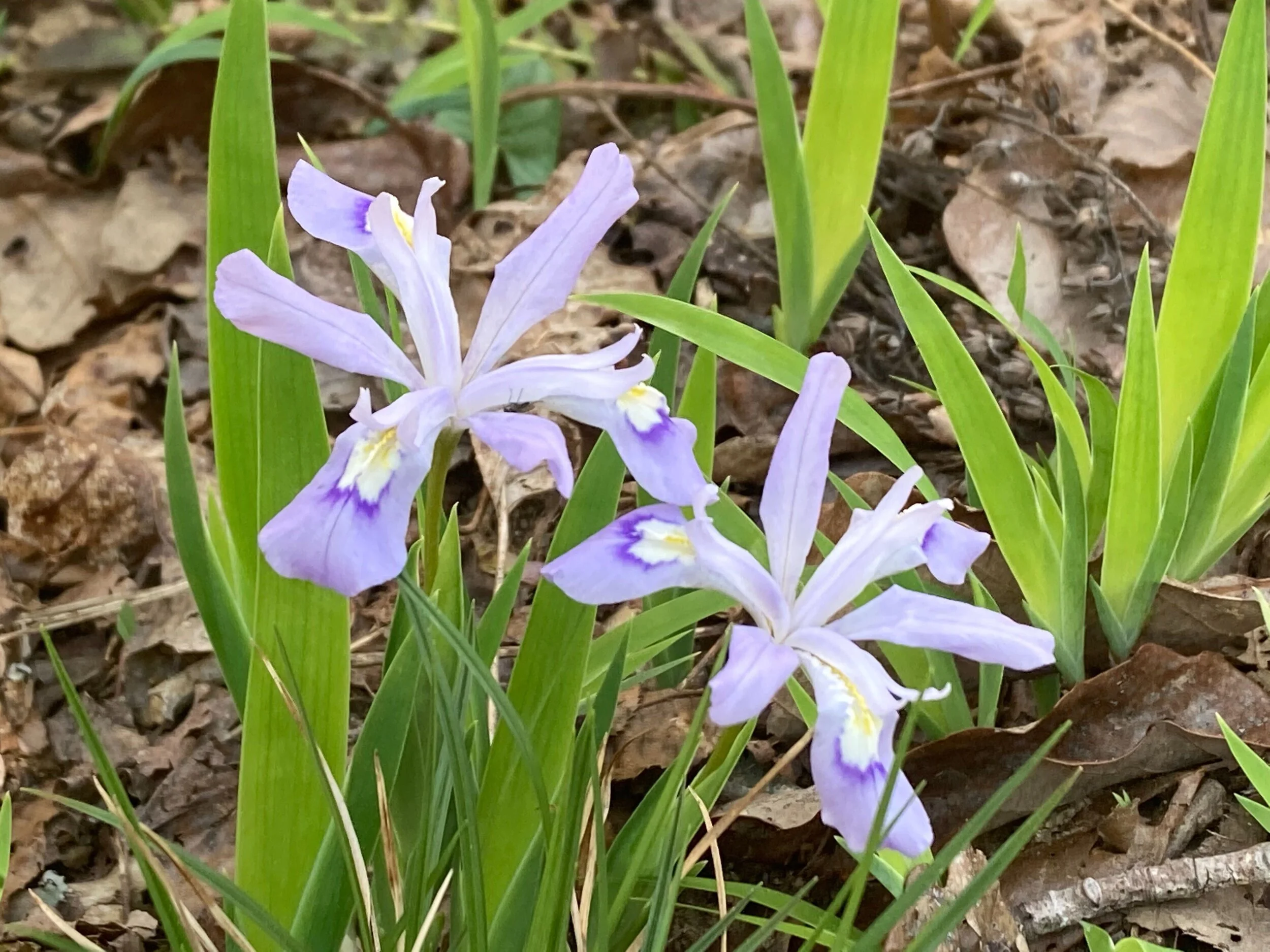Dwarf Crested Iris
Scientific Description: Dwarf Crested Iris (Iris cristata) is a perennial herb and is a member of the Iris family (Iridaceae) that is rather low in stature, attaining a height of only 4 to occasionally 12 inches tall. It has light blue sepals with a white or yellow striped band. Along the band is a crested area referred to as a beard. It is most often found in hardiness zones 4 – 9. Since Chattanooga is in zone 7, it will do well here.
The species is found generally in lowland areas in the south to Midwestern wooded uplands areas, with the peat soil and pine barrens of New York state southwards to Florida, westwards to Arkansas, and then northeastwards to Illinois, Ohio and Missouri define the natural growth area.
The leaves are less than half an inch wide and from six to nine inches long. The Dwarf Crested Iris does best in well-drained, acid, rich soils, but is rather forgiving. In addition, if the soil and other environmental factors are too rich, other plants tend to crowd out the iris. Ordinary soil is the best choice.
The Dwarf Crested Iris blooms throughout April and requires full sun to partial shade.
Habitat Value: The flowers tend to attract both hummingbirds and honey bees – in addition to other bee species. The Dwarf Crested Iris, if allowed to multiply, will grow to a beautiful blue tapestry.
Slugs and snails can be a problem with this species. To rid them of these mollusks, place a shallow pie pan or another vessel in the ground even with the surface of the soil. Fill it with a little beer. The snail and slugs will be attracted to the malt scent of the beer and drowned in it. Empty every day until none appear.
By Charlie Berlin
Landscape Value: One of the best irises for your garden, dwarf crested Iris thrives in part shade in the south and full sun in the north. When happy they tend to form a blanket of green-blue foliage that will make you stop in your tracks when it blooms. Because of their size, they can get a little lost when mixed with larger plants so put in the front of your garden or in mass under trees. Supposedly, they can take over in ideal habits, but given how hard it is to find a suitable ground cover under trees I can’t see a negative. Most of the time they will need decent moisture to expand quickly, however, my most successful planting was on an east-facing slope under a full tree canopy without irrigation. Everyone was surprised with how well they did given the scant attention they had. Based on this, I suggest avoiding deep mulch (these had almost none) and plenty of shade. This makes sense as they spread by above-ground rhizomes and their foliage barely gets higher than the depth some people pile mulch. Like so many plants, as soil moisture increases so does the amount of sunlight they will tolerate. I have seen more than one beautiful fern mass in nearly full sun and wet, boggy soils.
By Matt Whitaker of WMWA Landscape Architects


